Saona Island beyond tourism: its inhabitants do not bargain for peace and tranquility
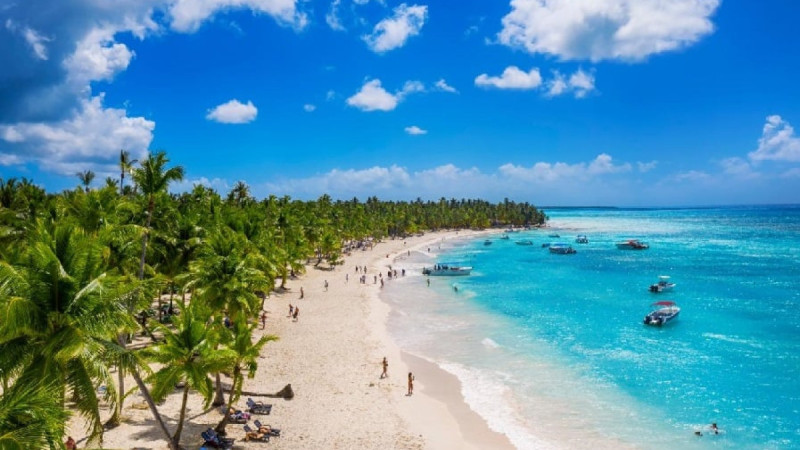
Santo Domingo.- Although Saona Island is commonly known for its attractive beaches and natural pools, there are two communities that have a population of more than 350 people who do not negotiate to live elsewhere for more amenities offered to them.
The peace and tranquility that prevails throughout the environment of the community called Mano Juan, located on the island that belongs to the Cotubanamá National Park in the eastern region, is one of the main reasons why its inhabitants are attached to living surrounded by the water of the Caribbean Sea.
Its residents have a particular story about the origin of their arrival on the island. Some have been settled for more than 40 years, with no regrets and without missing the modernity and comforts of the city.
According to what several residents told a team of Listin Diario, they have known the island in search of job opportunities, for love, others arrived through acquaintances of the dictator Trujillo and even some of them through relatives who worked directly with Spaniards who settled on the island decades ago.
Freddy Emilio has been living on the island for 55 years and explained to a team of Listin Diario that he got to know this destination through his grandfather, who took him to work at an early age with his employer, a Spanish settler.
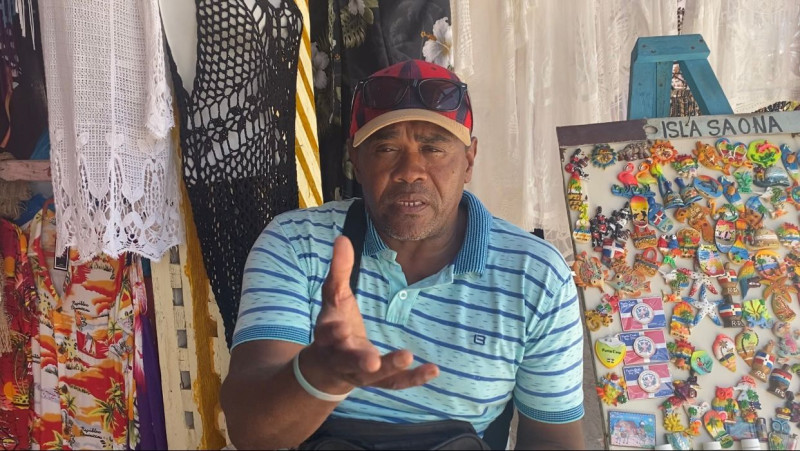 Freddy Emilio has been living on the island for more than 50 years LAURA CASTILLO
Freddy Emilio has been living on the island for more than 50 years LAURA CASTILLO
The security provided by the environment encourages them to stay away from the urban areas where dozens of misdeeds occur daily.
He described the coexistence of the island as “the best” and emphasized that he is not afraid of being assaulted, a practice that predominates in the urban areas of the country due to the increase in citizen insecurity.
In addition to the peace he feels, the economic dynamism due to tourism and the different work activities in which he can perform keeps Emilio motivated to continue residing on the island without inconveniences.
Until December 2022 the community had no electricity. The economically wealthy acquired solar panels, but those with scarce resources, including himself, bought candles and handmade lamps for lighting, he said.
But that was not an adversity to give up living in the middle of the Caribbean Sea and not even his wife, who threatened him to go live elsewhere if he did not make the decision to follow in her footsteps.
He told me: “My love, if you don’t go, I’m going. And I told him, then go,” he added, adding that they had two children who also did not adapt to the environment that is currently non-negotiable for him.
In reviewing his daily life without electricity, he highlighted the work of the Consorcio Energético Punta Cana-Macao (Cepem), who installed permanent electricity throughout the area at an affordable price.
Emilio occasionally goes out to the city to visit his relatives, but he does not spend more than three days there because he is not accustomed to restlessness.
Margarita is another one of those who add to the number of inhabitants of Saona Island. The heat and the mosquitoes that “whipped her at all hours”, according to her, have not been a significant problem to have as an option to live elsewhere, although it has not been easy to survive with the limitations.
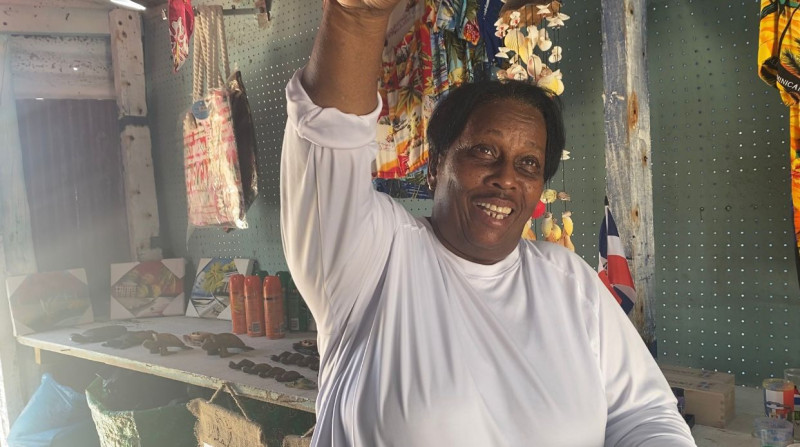
Margarita is well known and has been living in the Mano Juan community for about 20 years LAURA CASTILLO
She came to the island through acquaintances from Trujillo and, at that time, she was 17 years old. She lasted a while and then resigned to the island, but her resistance was not for many years, because she returned to where she was happy.
“We have taken our time because it is not easy, but we are going from strength to strength,” Margarita said, referring to the importance of the electric energy that was inaugurated a few months ago.
Her main source of income was to provide massage services to tourists, but due to osteoporosis she had to give it up and, at present, she rented a small kiosk to sell handicrafts, objects with the tricolor flag, and various utensils characteristic of the Dominicans.
“When one gets older, one is not in the street, but in total tranquility and here we all know each other,” she said, adding that when she comes to this capital she observes that people walk at “a hundred and something” and she decides to return quickly to her small treasure surrounded by blue water.
Ángela Mejía also works in a handicraft store and on the beach at the same time. She went to the island with a relative to work and there she married a man who conquered her heart. As a result of their love, they had three children who are currently 17, 11, and 3 years old.
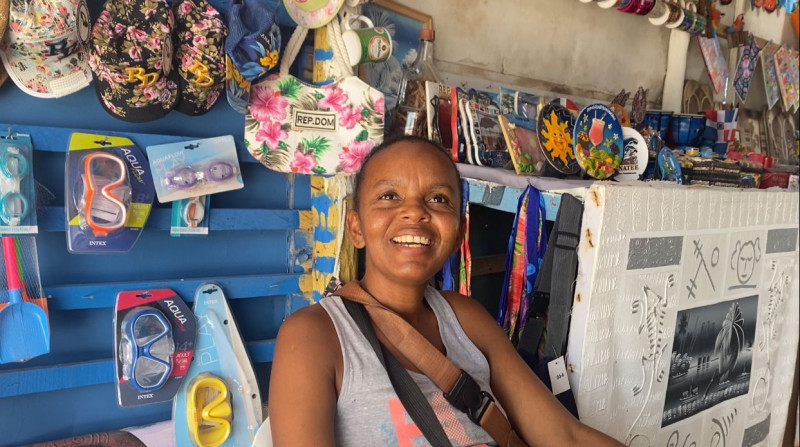
Ángela Mejía went to the island to work, fell in love, and started a familyLAURA CASTILLO
Although her husband sadly passed away four years ago, this has not been a reason to leave the island and try to rebuild her life elsewhere.
Living among the sand, the sound of the ocean waves and the wind blowing in all directions is the “best thing in the world,” she confessed with a smile.
In addition to Ángela, more people live in the area and, according to other testimonies of more community members, “they don’t lack anything”, as they allege with a satisfied face of living in direct harmony with nature.
The cyclonic seasons and their characteristic natural phenomena are some of the concerns of Ángela and other residents, due to the fragility of their homes, however, they say that they have become accustomed to these disturbances.
With firmness, Ángela said that she would not change her habitat for anything in the world and that she only usually goes out to La Romana to visit her mother.
“Here we’re fine, you walk all the time and nothing happens to you. For the city, why, so I can get a slap? There (on the beach) you can wake up at dawn and nothing will happen to you,” he said, adding that he does not change his peace for the facilities of other towns because there is a lot of insecurity in their streets.
Saona Island
Public transportation is by boat and from the island to the town of Bayahibe costs between 700 and 800 pesos per person.
The Mano Juan community on Saona Island has a medical center, churches, schools, restaurants, nighttime entertainment establishments, several popular hotels, and bodegas where the inhabitants stock up on raw food.
In addition to the recreational facilities, there are two stations, one with agents assigned to the Specialized Division of Tourist Security (Politur) and the other corresponding to the Navy of the Armed Forces.
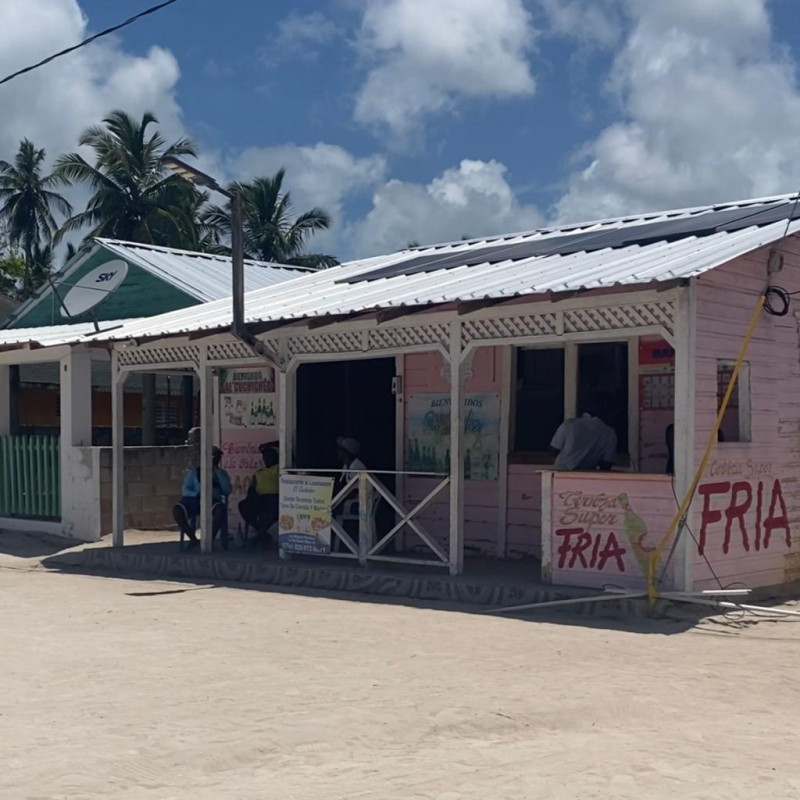
One of the popular places of entertainment in the Mano Juan community on Saona Island.


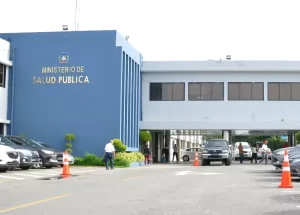











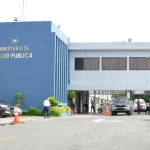

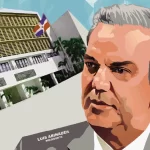

No body is supposed to live there period; it is a land reserve and thats that!!! Trujillo did the right things keeping this in its natural beauty!!!